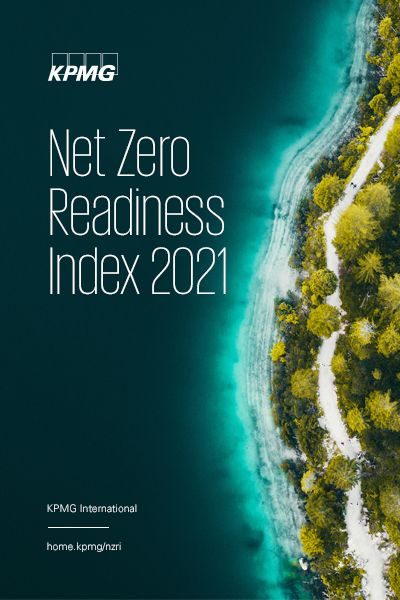Cross-party political support and clear legally-backed targets have enabled the comparatively swift decarbonization of the power sector in the UK – but many challenges lie ahead, particularly on heat and buildings as the UK moves towards Net Zero.
Institutional framework
Along with being second overall, the UK gained the highest national preparedness score of the NZRI where it provides a model for other countries – while showing how much more remains to be done. The 2008 Climate Change Act required the government to reduce national emissions of six greenhouse gases by at least 80 percent between 1990 and 2050. It also set up mechanisms to support this, including a carbon budget framework and an independent Committee on Climate Change. The act, introduced under a Labour government, had cross-party support and has been developed by subsequent Conservative-led administrations, with the reductions target recently increased to 68 percent by 2030 on the way to Net Zero by 2050.1
“This institutional set-up and framework is a real strength of the UK,” says Simon Virley, Vice Chair and UK Head of Energy and Natural Resources, “reinforced by high levels of public support.” It has produced strong results, with the second greatest reduction in greenhouse gas emissions of the 32 countries in the NZRI, falling by 34 percent between 2005 and 2018.

“That climate change and the UK’s pathway to Net Zero has remained such a high priority, in principle and practice, through the disruption of Brexit speaks volumes about the level of entrenched commitment – a positive sign for Net Zero-oriented policy longevity,” says Mikaela McQuade, Director, Energy, Climate and Resources, Eurasia Group. “As Prime Minister Boris Johnson readies to host COP26 in Glasgow, he will be looking to bolster the UK’s policy offering and will be motivated to use all tools available to him to get others to do the same. Even if domestic policy enthusiasm wavers over the medium to long-term, the economic integration of the UK with the EU will embed a baseline level of expected policy ambition – especially when considering the EU’s push for carbon border adjustments.”
Energy transition
One of the biggest achievements so far has been the rapid progress made in the decarbonization of the power sector, with the UK ranking second on the electricity and heat sector in the NZRI behind Denmark, with comparatively more aggressive government action for clean energy. The last coal-fired power station is due to close by 2024 and the proportion of renewable energy used in electricity production rose from 7 percent in 2008 to above 40 percent in 2020.2
Progress is also being made on converting industrial processes to using hydrogen and carbon capture, with the UK ranking third on the industry sector in the NZRI. On transport, overall adoption may be low at present, but electric cars and small vans are increasing in popularity; their lifetime costs may now be comparatively lower than fossil fuel alternatives, which the government has banned the sale of after 2030, with new heavy good vehicles banned from 2040 at the latest.3 But Virley says that more clear political signals are needed, including more detailed sector-specific plans. “We don’t need any more targets,” he says. “Now, the devil is in the policy detail.”
Public engagement
Most of the work which will directly affect citizens is also yet to come, Virley says. Despite mandatory building energy certification and high levels of household energy security which contribute to the country’s fourth-placed rating in the buildings sector, many Britons live in poorly-insulated houses which were built many decades ago, and around 9 in 10 are heated by natural gas. The government says that 600,000 homes a year will need to install a heat pump by 2028, while its Climate Change Committee puts the figure at 1 million annually by 2030. However, last year only around 30,000 heat pumps, which usually require the retrofitting of better insulation to be effective, were installed.
There have been a number of false starts and failed policies under successive governments when it comes to green home improvements, including the recently-scrapped Green Homes Grant.4 “A weakness in all of these is not thinking sufficiently about the consumer,” Virley says. “We have to design policies that work for people, not in theory.” Some local leaders, including the mayors of London and Greater Manchester are working on local area energy planning, in order to find the lowest cost way to transition to Net Zero in that area. But national politicians have had limited engagement with citizens about changing their home heating, or on other changes such as moving to electric vehicles, flying less and eating less meat. “This needs to change if we are to move forward in the UK,” says Virley.

Contact
Connect with us
- Find office locations kpmg.findOfficeLocations
- kpmg.emailUs
- Social media @ KPMG kpmg.socialMedia
1 ‘UK sets ambitious new climate target ahead of UN Summit’, UK Department for Business, Energy and Industrial Strategy, 3 December 2020. https://www.gov.uk/government/news/uk-sets-ambitious-new-climate-target-ahead-of-un-summit
2 ‘Hindsight is 2050 vision: learning the lessons from the UK’s experience to guide how we decarbonise the global power sector’, KPMG in the UK, June 2021. https://home.kpmg/uk/en/home/insights/2021/04/hindsight-is-2050-vision.html
3 ‘Government publishes world’s first ‘greenprint’ to decarbonise all modes of domestic transport by 2050’, UK Department of Transport, 14 July 2021. https://www.gov.uk/government/news/government-publishes-worlds-first-greenprint-to-decarbonise-all-modes-of-domestic-transport-by-2050
4 Roger Harrabin, ‘Green Homes Grant scheme to insulate houses axed’, BBC, 27 March 2021. https://www.bbc.com/news/science-environment-56552484



